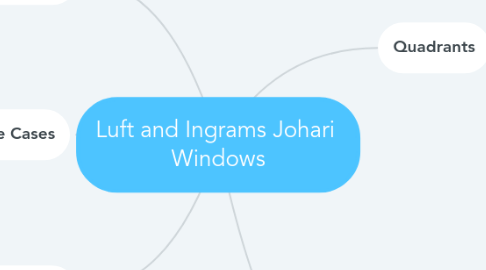Luft and Ingrams Johari Windows
Stakeholder Mapにより


1. Description
1.1. Invented by psychologists Joseph Luft and Harrington Ingham
1.2. Used for self-awareness and interpersonal relationships enhancement
1.3. Visual representation of an individual’s self as seen by others and themselves
2. Use Cases
2.1. Personal development
2.2. Relationships enhancement
2.3. Team building and communication
2.4. Conflict resolution
3. Limitations
3.1. Requires openness and honest feedback
3.2. Risk of misunderstanding or misinterpretation
3.3. Potential discomfort in revealing personal aspects
3.4. Might neglect individual’s private space
4. Quadrants
4.1. Open or Arena
4.1.1. Known by self and others
4.1.2. Available public information
4.1.3. Encourages communication and cooperation
4.1.4. Example: skills, attitudes, behavior, knowledge, abilities
4.2. Blind or Blind Spot
4.2.1. Known by others but not by self
4.2.2. Effective feedback can reveal these areas
4.2.3. Example: attitudes or behaviors observed by others but unrecognized by oneself
4.3. Hidden or Façade
4.3.1. Known by self but not others
4.3.2. Personal and sensitive information
4.3.3. Example: past experiences, fears, secrets, hidden feelings, agendas
4.4. Unknown
4.4.1. Unknown by both self and others
4.4.2. Could be revealed via self-discovery or observation by others
4.4.3. Example: untouched talents, unexpressed capacities, suppressed feelings, unconscious behaviors
